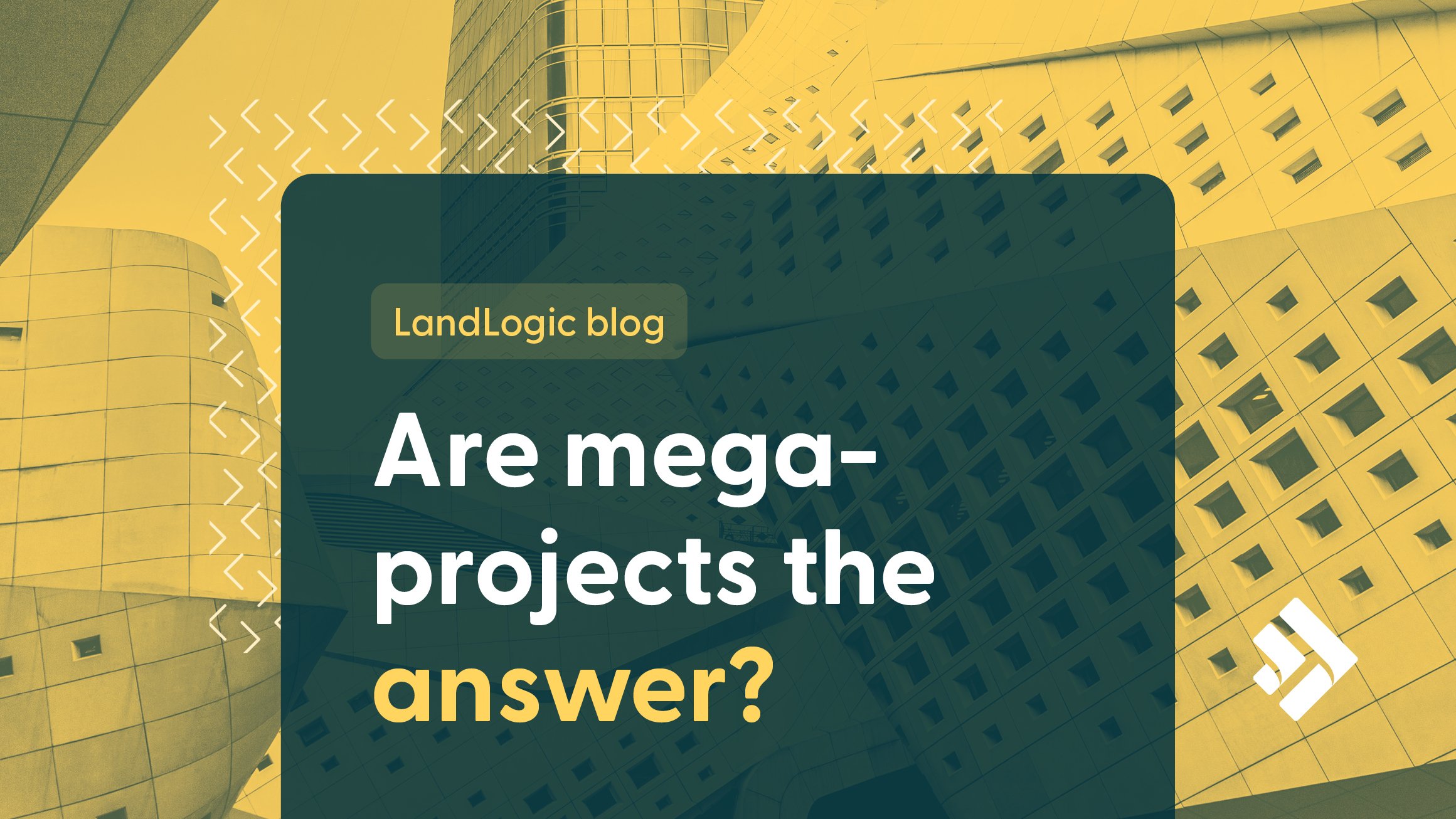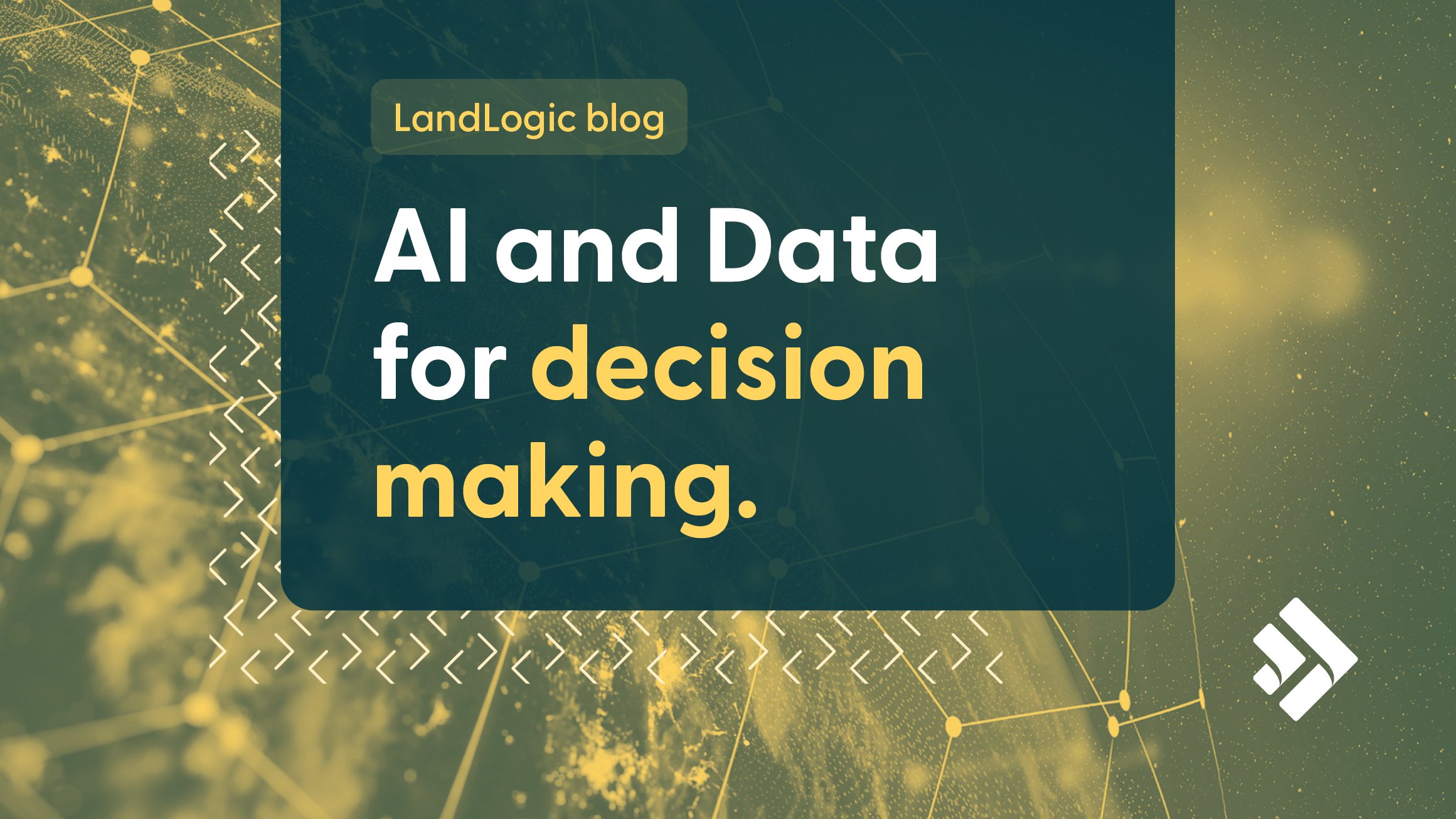AI and Data for decision making
AECO Innovation Lab recently ran a LinkedIn poll, exploring which technologies hold the greatest promise for streamlining the land development process.
Here are the results:

Navigating the complex terrain of land development is a slow and arduous challenge. The slow pace and high costs associated with property development exacerbate issues like housing affordability and supply inelasticity. While a few organizations with deep regulatory knowledge and established networks can use this complexity to their advantage, it creates substantial barriers for newcomers and stifles innovation, contributing significantly to our current housing crisis – both on the supply and affordability side.
AI for predictive analysis and map-based data technologies to provide additional insights can democratize data access, streamline development processes, and foster better collaboration between developers and regulators. By making critical information more accessible and queryable, these technologies can help align the interests of all stakeholders, ensuring developments meet community needs and comply with regulatory standards. This could lead to smarter decision-making, more streamlined project approvals, and help address the housing supply challenge.
At LandLogic, we're particularly excited about the potential of AI for predictive analysis in land development. If we can forecast the most appropriate uses for land by analyzing vast datasets, including market trends, zoning regulations, and environmental factors tremendous value can be unlocked. By identifying which projects are likely to gain planner support we can streamline the approval process and foster even more productive partnerships between developers and municipalities. This will not only save time and resources for developers it will help municipal planners by presenting projects that align with strategic planning goals to enhance community well-being and growth.
Imagine a future where a developer uses LandLogic to analyze data on population growth, market trends, priority development areas, and zoning regulations across potential sites. The AI predicts demand for residential and commercial spaces, advising on the site with the highest return on investment potential. This minimizes risk during the early planning stages.
Map-based data technology further enhances this vision by offering spatial analysis that aligns developer and municipal planner interests. By providing clear visualizations of land use, infrastructure, and environmental constraints, it can simplify identification of suitable development areas that meet official plans and community needs. This clarity allows developers to target their investments more strategically, while planners can ensure developments contribute positively to the community's vision.
The development process is complex. Soon, predictive AI and map-based data systems will help to improve development site selection and provide a more streamlined, collaborative process. LandLogic is committed to be part of this by improving decision-making, helping speed up development approval timelines and helping developers build great communities.
The new collaboration between LandLogic and Teranet is a game-changer. LandLogic’s Basic Zoning Report is providing real estate professionals across Ontario with instant access to critical zoning data. This powerful new capability transforms the due diligence process, offering an efficient and timely way to uncover a property’s highest and best use. Let’s take a closer look at how various professionals can harness this enhanced intelligence to drive success.
We are proud to welcome Hugh O’Reilly as the new Chair of LandLogic’s Board of Directors. A visionary leader with a proven track record in governance, strategy, and innovation, Mr. O’Reilly brings a depth of expertise that will be instrumental in shaping LandLogic’s next chapter.
LandLogic Solutions Inc. is proud to announce a strategic partnership with Teranet Inc., Ontario’s exclusive provider of land registry data and a trusted steward of property intelligence. Together, we are launching a new capability: instant zoning intelligence, embedded directly into GeoWarehouse, a platform used by real estate and land professionals across Ontario.
CMHC’s Housing Design Catalogue is a promising step toward faster, more affordable housing development. But even with pre-approved designs, projects can stall due to zoning restrictions, infrastructure constraints, and regulatory complexity. LandLogic bridges this gap by consolidating critical data; helping developers and municipalities identify build-ready sites in minutes, not weeks.
Residential Multiplex Infill (RMI) streamlines multi-unit development by identifying properties that align with zoning and funding opportunities like CMHC’s MLI Select. LandLogic simplifies this process with data-driven tools for zoning analysis, site selection, and ROI optimization—empowering real estate professionals to make smarter, faster decisions.
2024 has been a year of significant progress for LandLogic as we worked to equip the real estate industry with meaningful tools. This year, we launched innovative solutions that help identify ideal sites, assess property values, and evaluate risks and opportunities—providing the insights needed to streamline real estate projects.
Imagine you’re Drake, one of the world’s biggest stars. You have everything—fame, fortune and a dream home that you had custom built in Toronto’s prestigious Bridle Path neighborhood. But then a massive storm hits, and your mansion suffers significant flood damage. What went wrong?
Ontario faces significant obstacles in meeting housing supply goals, from lengthy development approval processes to fragmented data management, not to mention inflation, mortgage rates, and skilled trades shortages – both on the regulatory side and the industry side. One Ontario - powered by LandLogic - is ready to help on the data and process side, one of the biggest bottlenecks in getting projects approved.
LandLogic is thrilled to announce that it is now powering the One Ontario solution to streamline the development approvals process. LandLogic plays a pivotal role by structuring and harmonizing land data, providing jurisdictional clarity for developers while supporting authorities in making good development decisions.
By providing a comprehensive, automated review of potential sites, AI can help in selecting the most viable options, helping the developer optimize investments and mitigate risks.
Coming soon! The introduction of Zoning Reports to our platform will enhance the ability of our users to make strategic decisions and succeed in a competitive market. Stay tuned for the release and prepare to take your real estate ventures to the next level with LandLogic.
While the budget trends in the right direction for housing, real success hinges on aggressively cutting through bureaucratic red tape and accelerating approval processes. The government must transition from talk to tangible action, focusing sharply on execution.
A recent Bloomberg article pointed out that in 2013, Canada was 13th among 170 nations in meeting basic citizen needs, per the Social Progress Imperative. By 2023, it fell to 39th, significantly due to the housing affordability crisis and reduced productivity, paralleled by a decline in well-being.
As Canada grapples with a housing shortage of 3.5 to 5 million homes, the question arises: could the ambitious architectural mega-projects coming out of the Middle East offer an example for solving Canada’s housing crisis?
By operating as guerilla-like proof-of-concepts, these urban “experiments” can lead to tangible improvements and even potential policy shifts.
There is a pressing need for a balanced approach that respects community concerns while also advancing broader housing goals. This is where technology and data analytics should come into play.
AI for predictive analysis and map-based data technologies to provide additional insights can democratize data access, streamline development processes, and foster better collaboration between developers and regulators.
The disconnect between available land versus developable land requires a strategic, collaborative approach if we are going to transform raw land into vibrant communities.
Being aware of a property's flood plain status or other environmental constraints not only impacts the feasibility of development plans but could also provide significant negotiating leverage.
With LandLogic our goal is to help construction leaders transform greenfield and brownfield sites into thriving communities, respecting the past and embracing the future.
The LandLogic team has dedicated decades to researching the challenges of urban development, focusing on streamlining the development process.
The AECO team has been incubating LandLogic over the past year, and the platform is now ready for beta testing.






















